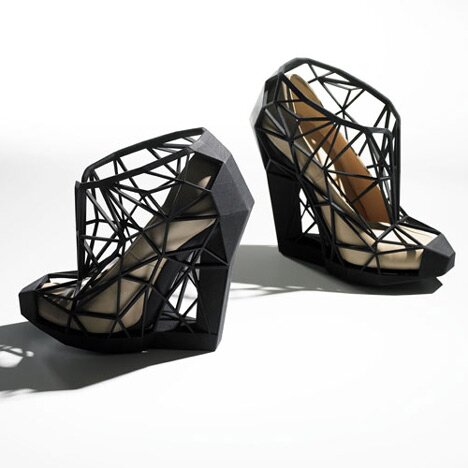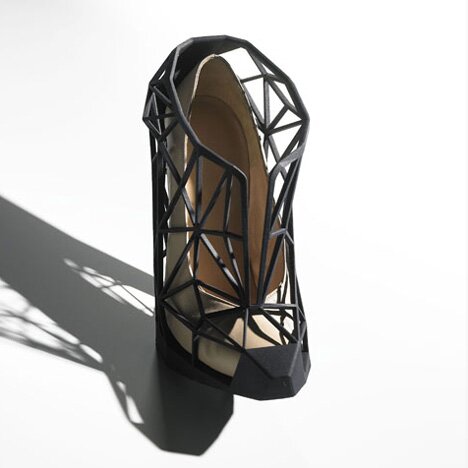Anna Kidman - Friday, October 28, 2011
Last week, a project I've followed since its inception, finally launched in downtown Auckland to much interest and acclaim. Attempting to challenge and win the world land speed record is no easy feat. However, for a group of talented New Zealand designers and engineers it serves as little deterrence. Headed up by Richard Nowland, who's dedicated his life to this project for the past three years, we caught up with him to find out exactly how you build a car that can reach speeds of upwards of 1000mph.

DF: Tell me about Jetblack.
RN: Jetblack is a NZ led challenge on the world land speed record...I say NZ led as we have selected engineers from within NZ but also an increasing number of international members of the team. The current land speed record stands at 763mph or just over the speed of sound and was set in 1997 by a British team and their vehicle Thrust SSC. Jetblack was established in 2007 and at that stage we were starting to design a vehicle to break the NZ and Australian land speed records, a mere 500mph, – while doing so some key engineers were found and the capability within the team existed to go well beyond that. The design process that followed produced something that has the capability to go beyond the current challengers of the record who are aiming at 1,000mph.

DF: When did you first decide to challenge this record?
RN: It started to grow within the team in 2010. The initial evaluation of our aerodynamicist Richard Roake’s first design established it has very good performance characteristics and that it was capable of much more than originally anticipated. The idea of the world land speed record was always as a 2nd project once we’d built a first car and broken the NZ and Australian records – this slipped away as we entered 2011 as the confidence of the team in the design grew and we realised what it was capable of.
DF: It's NZ's first challenge on this record, it’s a big deal. What technology(s) are you employing that you think will get NZ across the line?
RN: The only two countries to have ever held this record over the last hundred and ten years or so are the US and Great Britain. One of the biggest challenges with such a small country like NZ mounting a challenge is that unlike the US and UK we don’t have huge automotive or aerospace industries. We are, however, very good at inventing solutions for niche or peculiar problems. The vehicle uses unique technologies all over it. The aerodynamics and also how we simulate the airflow and interaction of dirt particles mixing with air underneath the vehicle is very unique. We established a partnership with a company in Spain called X-Flow CFD that can provide these simulations and provide the most accurate information available on what happens under the vehicle and around the rest of it. This is also planned to be the first all carbon fibre monocoque chassis used on a land speed record vehicle – using similar design and fabrication technology to Americas Cup racing yachts. There is no steel or aluminium frame with body panels attached, it’s all one structure – so unlike a human or a fish with bones as its structure the car is more like a crab or lobster – the skin is the structure as well. Very strong and very light.

DF: Working with Glynne Bowsher (designer of the current world land speed record holder) must offer some much needed insight into the competition, what’s it like having him design the wheels, such a critical part of the vehicle?
RN: Glynne brings such vast experience to the team. He was also involved with Thrust 2 which held the world record between 1983-1997. That project started in 1977 so he’s been involved with the world land speed record for longer than I’ve been alive. He’s also designed for the steam car world record and a challenger for the world water speed record. But despite all this experience he’s still very open to trying different methods of design and thinking about different ways to solve the wheel design challenge.
DF: What’s been the most challenging part to date with this ambitious project?
Jetblack started from nothing more than a dream; the project has been built completely from scratch. It seems a long time ago now but there was a time when the key people were still not found and the concept for what Jetblack represented was still quite ambiguous. Most challenging has been building the team – the best engineers don’t want to be associated with projects that aren’t worthy of their time – they have better things to do….and being engineers they tend to be quite conservative and reluctant when deciding what to get involved with. The one thing I am most proud of today is the people we have with us. There’s a definite quality and personality trait that we all share. The eventual design and development of the car, and the way it is run, will be a reflection of the people involved – so effective team selection is also the most important part at this stage.

DF: What are key design elements in the car that ensure speed efficiency?
There’s nothing in the car that’s not absolutely necessary; however the major elements are the aerodynamics, propulsion and wheels. The car doesn’t work without all the necessary components like hydraulics or wheel bearings etc but if you get the three fundamentals wrong nothing else matters. Aerodynamics relates to the airflow and also the particles kicked up by the wheels – Richard Roake’s job is to not only ensure the design is efficient (low drag) but also to ensure it remains in control throughout the range of speeds that will be encountered. Part of the difficulty is that what works for one end of the velocity spectrum may not work at the other end – getting both these has been called the holy grail. Unlike aircraft that have open skies to operate in should design imperfections be present – with Jetblack we’re designing for supersonic speeds within only a few millimeters to operate with all 4 wheels on the ground – it’s an extraordinarily difficult task.
DF: What speeds are you hoping to reach in order to obtain the record, and when?
RN:We’re not entirely sure where we’ll reach in terms of a final speed. Several challengers are aiming for the 1,000mph mark which is ambitiously higher than the current record of 763mph (1,246km/h) set in 1997. The limits of technology are where we are aiming to reach but we’re quite confident that will be well beyond the thousand miles per hour mark. Watch this space.
For more information about Jetblack visit www.jetblack.co.nz



































